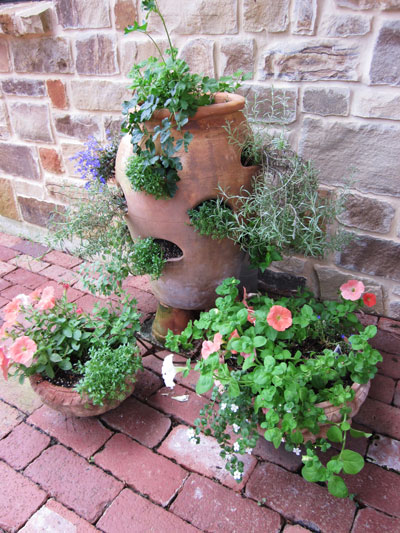Strawberry jars – For fruit, flowers, foliage, and fragrance
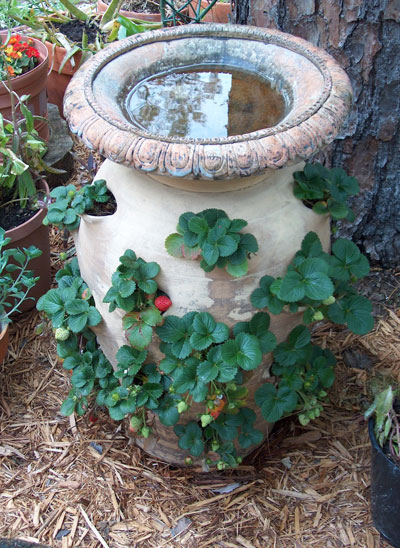
There’s something endearing about strawberry jars that goes beyond their association with strawberries. Maybe it’s the way they decorate gardens with their various shapes, colors, and textures. Maybe it’s their elusive heritage that hints at Victorian plant-filled sunrooms. Or maybe it’s the invitation they send through their multiple planting pockets. “Plant a garden” they seem to suggest. “There’s room aplenty.”
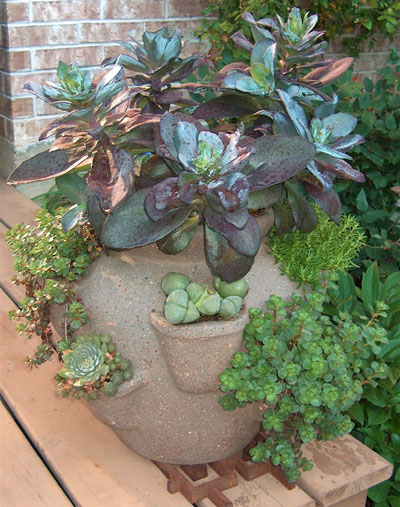
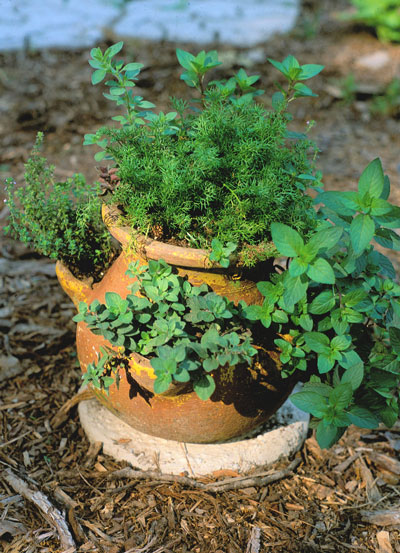
Indeed. Large strawberry jars can measure more than 36 inches tall and contain two dozen or more planting pockets — perfect for an herb garden on a sunny deck, a color garden on a patio, or a strawberry patch beside the back door. Even short, potbelly-style jars typically offer 3 planting spaces, plus the opening at the top—just the thing for moss rose, hens-and-chicks, leaf lettuce, or chives, thyme and other small herbs. Creeping Jenny, miniature roses, verbena, begonia, ferns, aloe, and salad greens are great for mid-size strawberry pots which usually stand 12 to 16 inches tall and offer 9 to 12 holes.
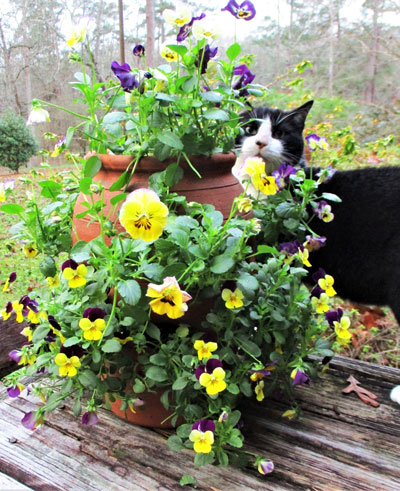
No doubt the array of sizes and shapes contributes to the allure—and usefulness– of these ever -popular containers. Elegantly tall or short and pudgy, vintage or Victorian, a folk art creation or a sleek adaptation: there’s a strawberry jar for every size and style of garden, be it a rustic tabletop, a corner veggy patch, or a large formal landscape. Materials reinforce garden themes and mood, as well. For earthy tones and texture select strawberry jars made of terra cotta, resin, fiberglass, or cement. For color statements choose ceramic strawberry jars in red, blue, purple, and other vibrant hues.
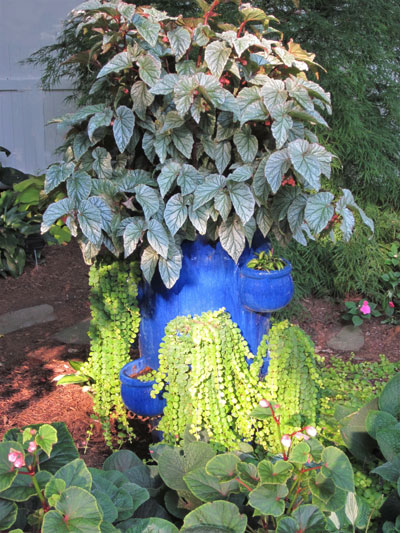
Planting tips
Before you begin planting, make a watering tube by cutting 1-inch PVC pipe 2-3 inches shorter than the height of the jar. Drill 1/8th-inch diameter holes every 2 inches or so on alternate sides of the pipe. Cap the bottom with a PVC cap. (If PVC pipe is not available, use garden hose. Pug the bottom end with a cork.)
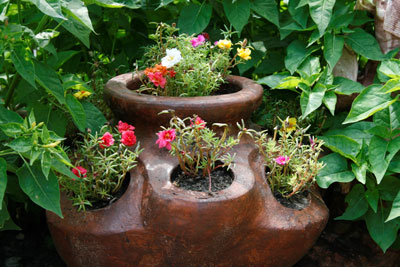
At planting time, blend time-release fertilizer into standard potting mix if desired. Dampening the mix makes planting easier. Cover the top of the watering tube with a plastic baggie, and then position it in the center of the jar. Add potting mix to an inch below the first opening. (Note: Some strawberry jars have a cup-like protrusion under each hole. The cups help retain soil, support plants, and make watering easier if you don’t use a watering tube.) Depending on the size of each plant and its rootball, either insert it through the opening from the inside or the outside of the jar. Add soil.
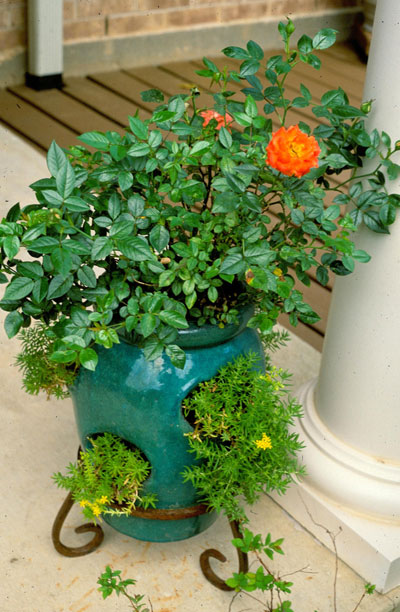
Continue planting the side pockets, and then plant the top. The soil surface should be approximately 2 inches below the top of the container. The watering tube should extend an inch or so above the soil surface.
